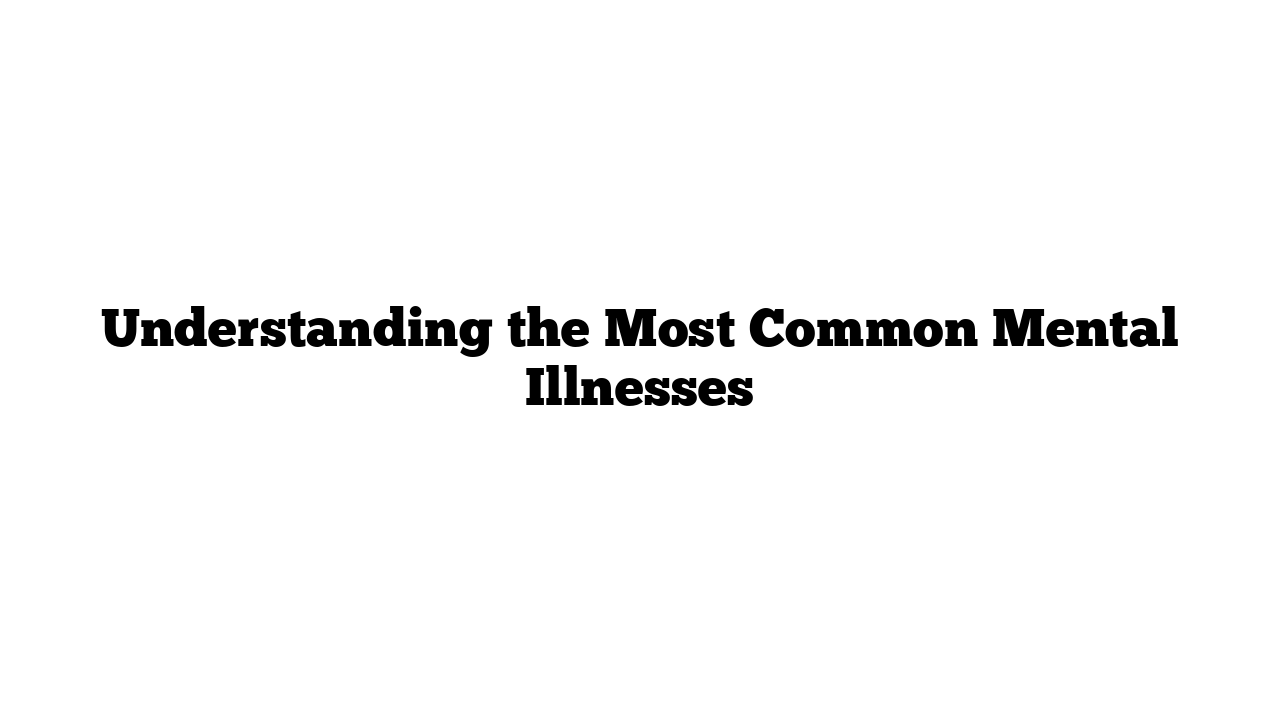Mental health is an essential aspect of our overall well-being. While many people may experience temporary feelings of anxiety or sadness, mental illnesses can significantly affect daily life and functioning. In this article, we’ll explore some of the most common mental illnesses and their impact on individuals, explained by an expert.
1. Anxiety Disorders
Anxiety disorders are like that uninvited guest at a party who just refuses to leave. While everyone feels anxious from time to time—such as before an important meeting or during exams—anxiety disorders become problematic when they start to control your life.
People with anxiety disorders often experience intense fear or dread in response to certain objects or situations. This may manifest as physical symptoms like rapid heartbeat and sweating. For instance, someone with a panic disorder might suffer sudden attacks of fear even when things seem fine.
A diagnosis of anxiety disorder is made when a person’s response is inappropriate for the situation, cannot be controlled, or interferes with normal functioning.
2. Depression Disorders
In the USA, approximately 6.7% of the adult population—around 15.7 million people—live with depression. It’s important to note that depression is more than just feeling sad; it’s a complex condition that can manifest differently in men and women.
Key Differences:
- Women often experience feelings of worthlessness and guilt.
- Men may exhibit symptoms such as fatigue and irritability, which can sometimes lead to their depression going unrecognized.
Common treatments for depression include cognitive behavioral therapy (CBT), interpersonal therapy, and psychoeducation groups.
3. Psychotic Disorders
Psychotic disorders, such as schizophrenia, involve distorted awareness and thinking. Individuals with these disorders may experience hallucinations (seeing or hearing things that aren’t real) or delusions (false beliefs that are firmly held despite contradictory evidence).
This can be frightening for those affected, as they may struggle to distinguish between what is real and what isn’t.
4. Eating Disorders
Eating disorders go beyond concerns about food; they often involve an attempt to control one’s life through food. Some common types include:
- Anorexia Nervosa: Characterized by extreme restriction of food intake, leading to dangerously low body weight.
- Bulimia Nervosa: Involves binge eating followed by purging to prevent weight gain.
- Binge Eating Disorder: Individuals may eat large amounts of food for comfort, even when not hungry.
Eating disorders can have serious health implications and are often rooted in emotional and psychological issues.
5. Personality Disorders
Personality disorders can significantly impact how individuals think, feel, and behave. These disorders deviate from societal norms and often interfere with personal and professional relationships. Examples include:
- Antisocial Personality Disorder
- Obsessive-Compulsive Personality Disorder
- Paranoid Personality Disorder
Individuals with these disorders may find it challenging to maintain relationships and function normally in society.
6. Dissociative Disorders
Dissociative disorders can make a person feel detached from themselves or their surroundings. This often occurs after experiencing overwhelming stress or trauma, such as accidents or disasters. Types of dissociative disorders include:
- Dissociative Identity Disorder: Previously known as multiple personality disorder, where individuals have two or more distinct identities.
- Depersonalization Disorder: Characterized by feelings of being detached from one’s body or thoughts.
7. Factitious Disorders
Factitious disorders involve intentionally producing or exaggerating symptoms to assume the role of a patient. An example is Factitious Disorder Imposed on Self (formerly known as Munchausen syndrome), where individuals may go to great lengths to gain sympathy or attention through deception.
Understanding these conditions can be challenging for both the individual and their loved ones.
8. Sexual and Gender Disorders
These disorders affect sexual desire, performance, and behavior. They include conditions like gender dysphoria, where individuals feel a disconnect between their gender identity and physical sex.
Examples:
- Paraphilic Disorders: Involving unusual sexual desires that can be harmful or distressing.
- Sexual Dysfunction Disorders: Making sexual activity difficult or unenjoyable.
9. Tic Disorders
Tic disorders, such as Tourette’s syndrome, involve repetitive, involuntary movements or sounds. These often begin in childhood and may improve or worsen over time. While there’s no cure, there are strategies to help manage symptoms effectively.
10. Mood Disorders
Mood disorders, also known as affective disorders, create emotional fluctuations that can be difficult to manage. Individuals may experience severe highs and lows, leading to feelings of extreme sadness or happiness. The most common mood disorders include:
- Depression
- Bipolar Disorder
- Cyclothymic Disorder
These disorders can significantly affect daily functioning and relationships.
Final Thoughts
Understanding these common mental illnesses is crucial for promoting mental health awareness and compassion. If you or someone you know is struggling with any of these conditions, it’s essential to seek professional help. Remember, mental health matters, and support is available.
For more information and resources, visit medicaltimes.io.
